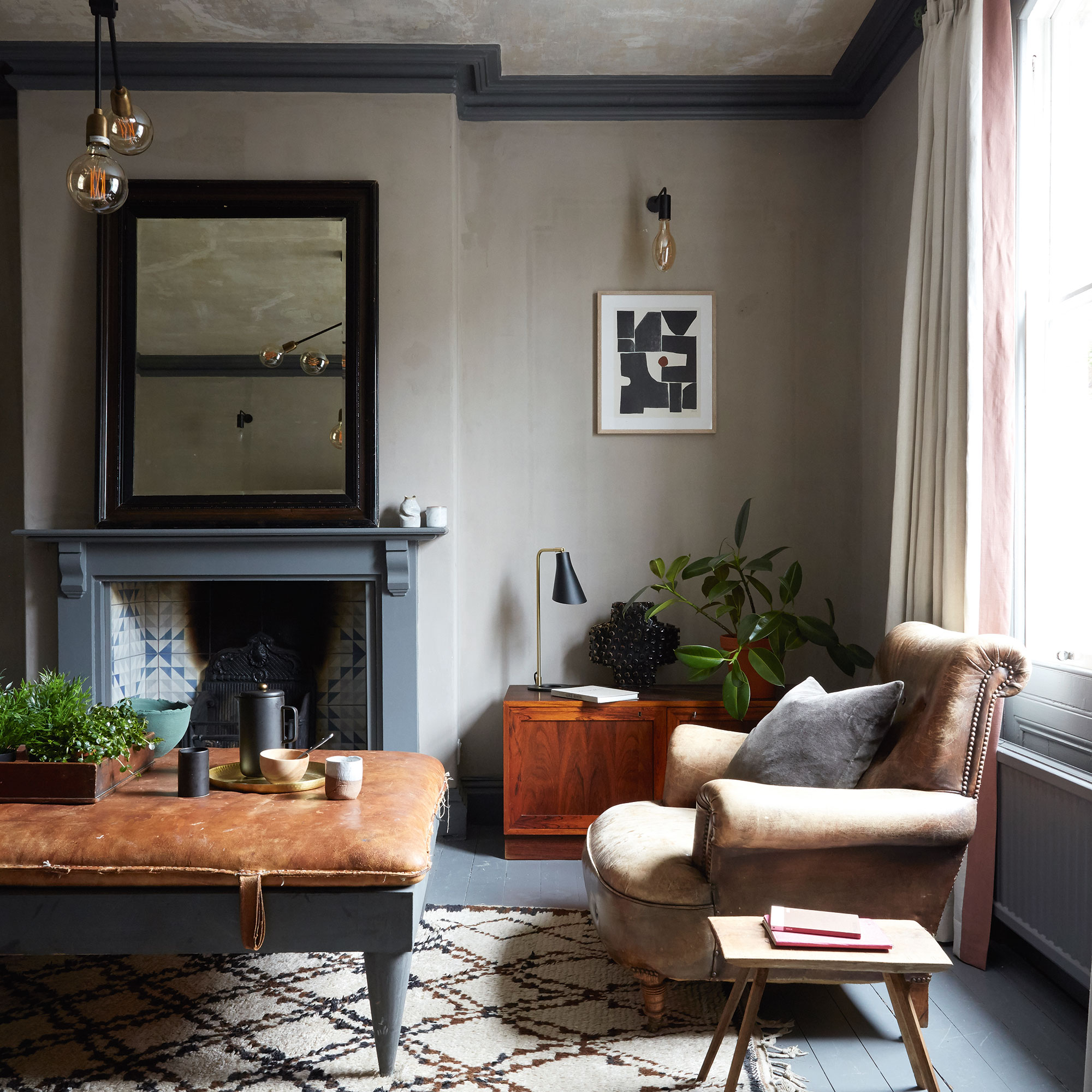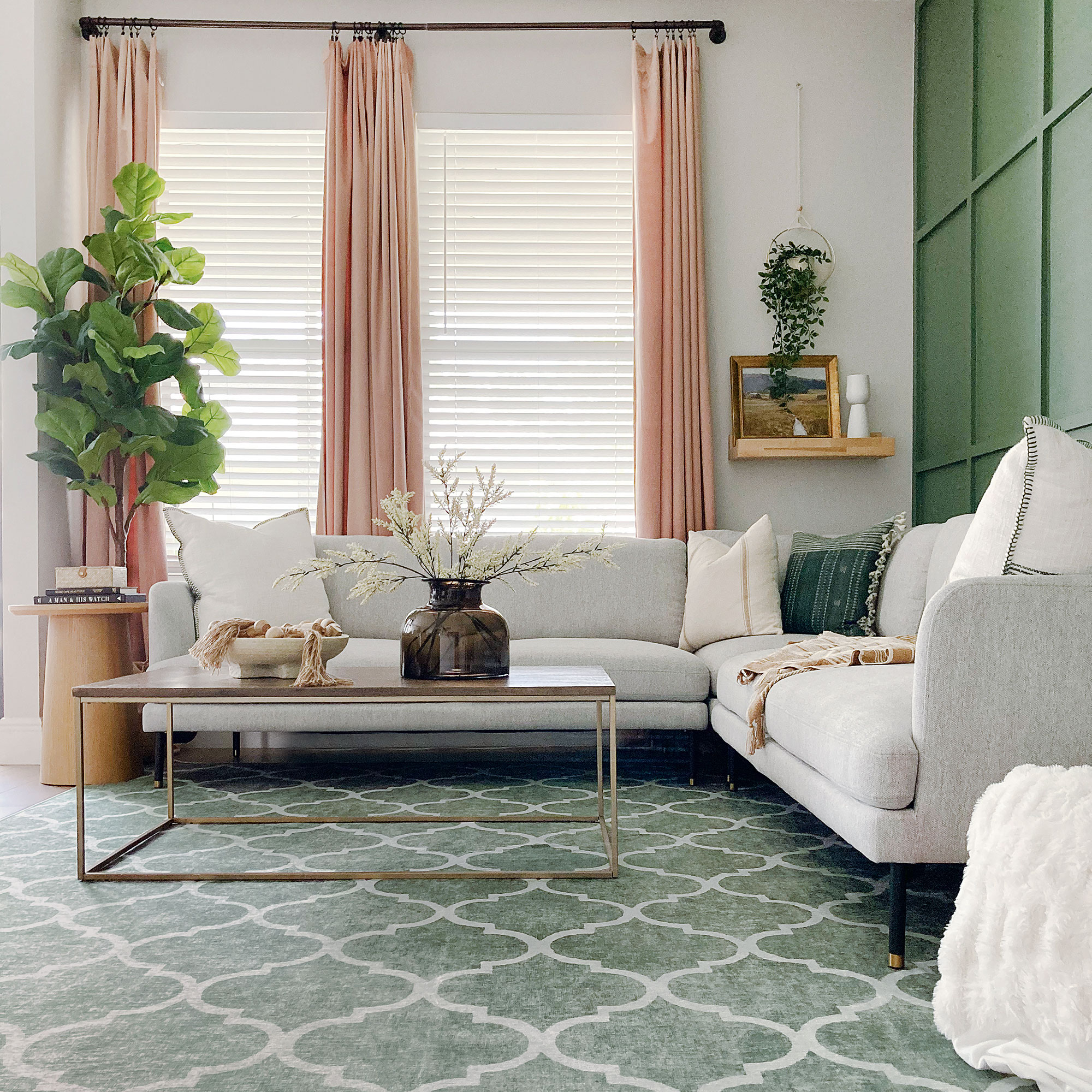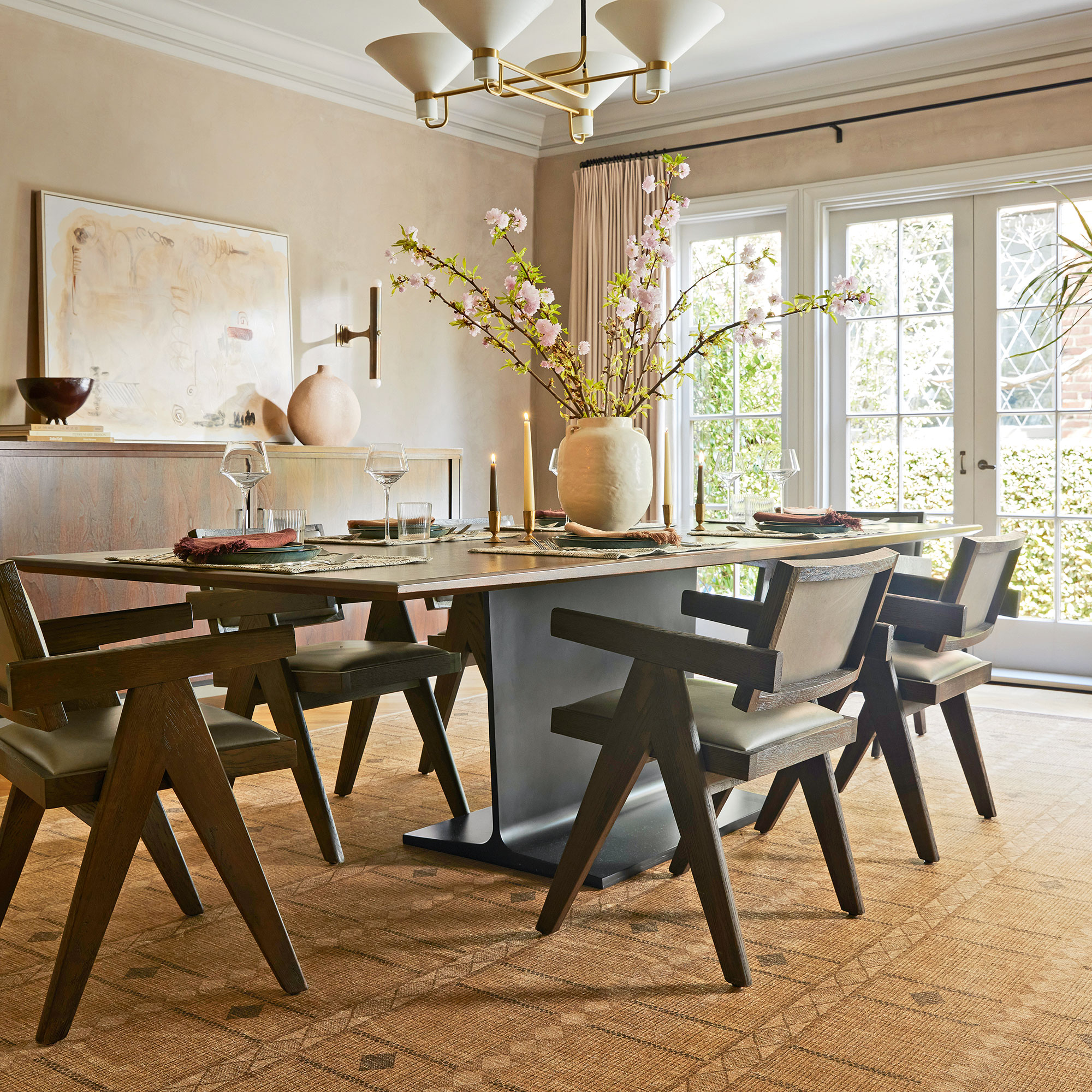
The right flooring can really set the look for a scheme, with carpet and rugs having many positives – and we’re not just talking about the obvious comfort underfoot. But with so much choice, from colour to texture, material to design, where do you start when choosing your living room or bedroom flooring ideas?
We asked three people in the know – the director of a rug brand, brand manager at a flooring company and a carpet expert – to share their secrets
Meet the experts
The carpet comeback
‘Carpet, like anything to do with interiors, enjoyed a boom during the Covid years – but, let’s be honest, there are only so many floors to carpet, so there has been a decline in carpet sales,’ says Rupert. ‘Furthermore, LVT and wood flooring remain an established home decor trend – for practical, maintenance and lifestyle considerations. That said, carpet remains extremely popular for stairs, landings, bedrooms and some living rooms.’
Kirsty says, ‘A high-pile carpet provides a sense of luxury and softness underfoot in a bedroom. In contrast, a carpet with tightly woven fibres is hardwearing and soundproofing, making it a great choice for high-traffic areas such as the hallway and stairs.’
‘A big help for the carpet industry is the increasing desire for calm, nurturing interiors,’ says Rupert. ‘As the home becomes more of a sanctuary, the soft, warm and textural qualities of carpet really resonate with consumers.’ Kirsty agrees, ‘Carpets add a wonderful soft and homely feel to any interior.’

Trends to watch
‘While neutrals continue to be a best-seller for their timeless appeal, we’re also seeing an increase in customers looking to add a sense of personality to their floor,’ says Kirsty, ‘from stripes to florals and in a range of colours from soft pastels to luscious greens or deep majestic tones. These vibrant colourways are a brilliant way for people to elevate their entire scheme by making their floor a centre-focus.’
Rupert agrees, ‘Greys are on the wane, giving way to warm earthy colours, so ochres, soft golds, earthy greens and sage greens are growing in popularity, as is blush pink. We’re also seeing more pattern and colour on stairs and landings; however, stripes are diminishing, with herringbone and geometrics popular, as are natural textures such as loop piles,’ says Rupert.

When it comes to rugs, ‘neutrals are still a go-to because of their versatility and timeless appeal,’ says Daniel, but he has noticed pattern is gaining popularity. ‘Homeowners and designers are embracing more pattern to add personality to their spaces. Another notable trend is mixing neutral and patterned rugs, using neutral tones as a base, layering on pattern to create greater visual impact.’ Custom-made rugs are also popular, as are geometrics and Scandi-inspired designs, vintage looks and nature-influenced motifs.
Material matters
‘The natural trend isn’t just about colours,’ says Rupert, ‘but also materials, with a trend towards eco-friendly and bio-based materials, such as carpets in 100% undyed British wool with cotton, jute and natural rubber latex backing. Likewise, synthetic fibres and cellulosic fibres, which are 100% biodegradable, are also gaining traction.’
Daniel agrees: ‘Recycled PET, rugs made from recycled plastic bottles, are becoming increasingly popular. The PET fibres are durable, stain-resistant, and can be as soft as traditional fibres. Jute, sisal and seagrass are increasing in popularity yearon-year, as are washable rugs.’
Decisions, decisions
‘Do your research based on what carpet works well in that specific room,’ says Kirsty. ‘And think about how much use it will get,’ says Rupert. ‘What are your family circumstances – young children, teenagers or empty nesters? How long do you want it to last? For ease of maintenance, low-pile carpets are ideal.’
Both Rupert and Kirsty agree that it then comes down to personal style. ‘For longevity, purchasing a design that you’ll continue to love for several years is so important, whether that’s a wow-factor carpet with a bold design, or a neutral or natural carpet that subtly compliments your existing scheme,’ says Kirsty.
‘Starting your new scheme with a rug is a strategic and impactful approach to interior design – and it makes the whole process really easy, too,’ says Daniel. ‘A well-chosen rug acts as the foundation upon which the room’s aesthetic is built, making it easier to pick furniture and accessories.’

‘When choosing a rug for your room, think about the dimensions of the space, especially if it’s narrow or non-uniform in layout; your existing furniture, budget and the overall look and feel that you’re trying to create,’ he adds.
When it comes to sizing, says Daniel, ‘The 18-inch rule for rugs is a common guideline to ensure a room looks balanced – its premise is that when placing a rug in a room, there should be about 18 inches of bare floor space between the edge of the rug and the walls. This helps to create a border around the rug, framing the space. In a dining room, the rug should be large enough so that when chairs are pulled out from the table, they remain on the rug, while in a bedroom, the rug is often placed under the bed, extending out on both sides – or have the lower two-thirds on a rug.’
Where to buy a rug
If you're looking for a durable and luxurious finish consider this 100% wool DUSK design
This Dunelm rug has a neutral colour palette with an on-trend border to add an extra flourish to your flooring.
Ruggable has plenty of incredible collaborations, but this sunset rug from Justina Blakeney caught our eye this year.
Need to know: How to choose the best carpet
Rupert Anton from the Carpet Foundation shares his top tips when shopping for a new carpet:
- Start with suitability: how much wear will it receive? The hall, stairs and landing, for example, will need a much heavier-wearing carpet than a bedroom.
- What are your decorating plans? Are you matching the carpet to a scheme, or will you be decorating in the future?
- Think about longevity: how long do you want your carpet to last? Is it a quick fix or a buy for your forever home?
Need to know: How to choose the best rug
Daniel Prendergast, director at TheRugSeller.co.uk, shares his top tips when shopping for a new rug
- Create an illusion of space by choosing a neutral shade and delicate design that won’t overwhelm the space and make it look small.
- Get the size of the rug right. If the room has a bed, the rug should extend at least a foot beyond the sides and end of the bed.
- Rugs with horizontal stripes or patterns can create an illusion of width, making the room appear larger.
The scalloped home furnishing trend is not going anywhere anytime soon - and now, it's even spread to the likes of rugs. But we're not complaining by any means. On the contrary, we're so here for it as the curved edges of the likes of this Dunelm rug soften any space and even bring a sense of movement to a room.
We all swear by our Ruggable rugs in the Ideal Home office - they're washable, come with a non-slip pad and there's a myriad of designs to choose from. And if I was to add another one to my home, it would be this vibrant, artistic Hilma Sunset Rug from the brand's collab with La-based artist and designer, Justina Blakeney.
The scalloped home furnishing trend is not going anywhere anytime soon - and now, it's even spread to the likes of rugs. But we're not complaining by any means. On the contrary, we're so here for it as the curved edges of the likes of this Dunelm rug soften any space and even bring a sense of movement to a room.
We all swear by our Ruggable rugs in the Ideal Home office - they're washable, come with a non-slip pad and there's a myriad of designs to choose from. And if I was to add another one to my home, it would be this vibrant, artistic Hilma Sunset Rug from the brand's collab with La-based artist and designer, Justina Blakeney.







